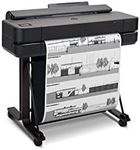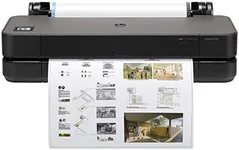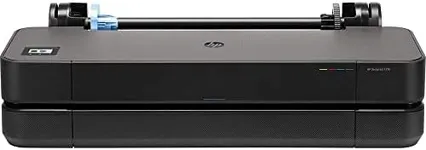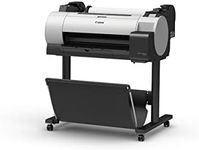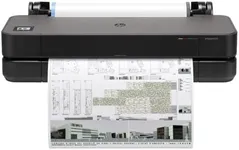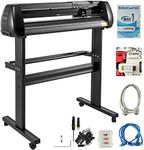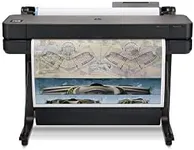Buying Guide for the Best Plotter Printers
Choosing a plotter printer can feel overwhelming because these machines are designed for specialized tasks like printing large-scale graphics, architectural plans, engineering drawings, or posters. The right plotter printer for you depends on what you plan to print, how often you’ll use it, and the level of detail or color accuracy you need. Before making a decision, think about the size of your typical projects, the materials you want to print on, and whether speed or print quality is more important for your work. Understanding the key specifications will help you match a plotter printer to your needs and ensure you get the best results for your projects.Print WidthPrint width refers to the maximum width of material that the plotter printer can handle. This is important because it determines the largest size of print you can produce in a single pass. Plotter printers come in various widths, commonly ranging from 24 inches to 60 inches or more. If you mostly print standard architectural or engineering drawings, a 24-36 inch width may be sufficient. For larger posters, banners, or wide-format graphics, you might need a 44-inch or even 60-inch model. Consider the largest size you expect to print regularly and choose a plotter that accommodates that width to avoid piecing together multiple prints.
Print ResolutionPrint resolution, measured in dots per inch (DPI), indicates how detailed and sharp your prints will be. Higher DPI means finer detail and smoother gradients, which is especially important for graphics, photos, or presentations. For technical drawings or line art, a lower DPI (around 600) is often sufficient, while for high-quality posters or photographic prints, a higher DPI (1200 or more) is preferable. Think about the type of work you do most—if you need crisp lines for plans, you can prioritize speed over resolution, but for marketing materials or art, higher resolution is worth considering.
Ink Type and Color SupportPlotter printers use different types of ink, such as dye-based or pigment-based, and offer varying numbers of color cartridges. Dye-based inks are vibrant and good for indoor graphics, while pigment-based inks are more durable and water-resistant, making them better for technical documents or outdoor use. Some plotters use only a few colors (like CMYK), while others offer additional cartridges for more accurate color reproduction. If you need precise color matching for graphics or photos, look for a plotter with more color options and pigment-based inks. For basic line drawings, a simpler ink system may suffice.
Media CompatibilityMedia compatibility refers to the types and thicknesses of paper or other materials the plotter can print on. Some plotters are designed for standard bond paper, while others can handle glossy photo paper, canvas, vinyl, or even specialty materials. If you plan to print on a variety of media, check the supported types and thicknesses. For technical drawings, standard paper is usually enough, but for creative or marketing projects, broader media compatibility gives you more flexibility.
Print SpeedPrint speed is usually measured in pages per minute (ppm) or the time it takes to print a standard-sized sheet. Faster print speeds are helpful if you have high-volume needs or tight deadlines, but sometimes higher speed can mean lower print quality. If you print large batches of plans or posters regularly, a faster plotter will save you time. However, if quality is more important than quantity, you might be willing to wait a bit longer for better results.
Connectivity OptionsConnectivity options determine how you send files to the plotter. Common options include USB, Ethernet, and wireless (Wi-Fi) connections. Some plotters also support direct printing from USB drives or cloud services. If you work in a team or need to share the printer, network connectivity (Ethernet or Wi-Fi) is useful. For solo use or direct connection to a single computer, USB may be enough. Consider your workflow and whether you need remote or multi-user access.
Ease of Use and Software CompatibilityEase of use covers the user interface, display screens, and how simple it is to load media or change ink. Software compatibility refers to whether the plotter works with your preferred design or CAD programs. If you’re not very technical, look for a plotter with a clear display and straightforward controls. Also, make sure it supports the file formats and software you use most often, so you don’t run into workflow issues.
